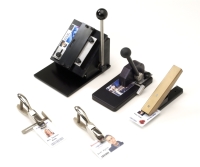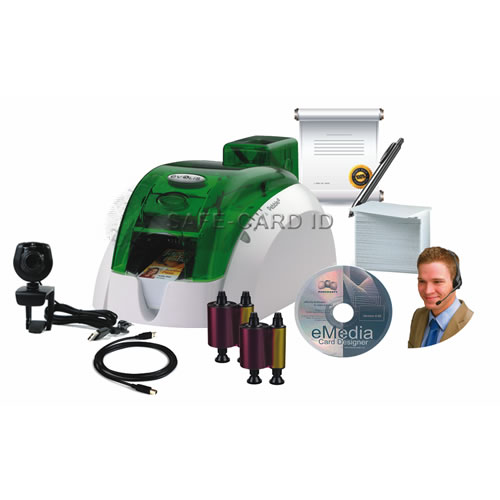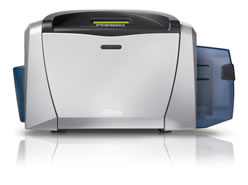 A slot punch provides the rectangular slot in the printed plastic ID badge so that it can be worn by use of a badge attachment such as a lanyard or badge reel. The punch will provide a consistent hole in a PVC card or an HID prox card without cracking the card.
A slot punch provides the rectangular slot in the printed plastic ID badge so that it can be worn by use of a badge attachment such as a lanyard or badge reel. The punch will provide a consistent hole in a PVC card or an HID prox card without cracking the card.
Slot punches are manufactured with our without edge guides. The guide is an important device that allows for a consistent hole. The punch eliminated the guess work it takes to measure the center point of each plastic card when hole punching either a vertical or horizontal card. Use of a slot punch provides a uniform slot in each ID card that increases the professionalism of the printed card.
Hand held slot punches are designed for use in a small organization where only a few cards may be punched at a time. These punches are heavy duty and designed to last.
Stapler style slot punches are easier to use than the hand held punch. Designed like a stapler, this slot punch provides a professional hole with a push on the top lever of the punch.
Table top slot punches are the choice for many medium to large card production groups. The lever is easily pulled and the movement causes a consistence slot punch with ease.
The electric slot punch can be operated by electric operation directed from a foot switch. Insert the card and press the foot pedal with your foot to discover a perfectly punched ID card.
Slot punches are designed to restore themselves by spring load so that the punch is ready for the next card. The slot punch is a high quality product that is designed to last for many years.


 The decision has been made. An ID badge system is needed for your organization. Important decisions will need to be reviewed and made at this time to get started. Specific requirements of your badges may call for a special module in the printer or a special software version to make sure that your badge needs are met. Prepackaged systems are perfect for most small businesses and organizations, however, it is important to take a peek at the options to make sure that your organization is set up not only for today, but for future badge printing requirements.
The decision has been made. An ID badge system is needed for your organization. Important decisions will need to be reviewed and made at this time to get started. Specific requirements of your badges may call for a special module in the printer or a special software version to make sure that your badge needs are met. Prepackaged systems are perfect for most small businesses and organizations, however, it is important to take a peek at the options to make sure that your organization is set up not only for today, but for future badge printing requirements.
